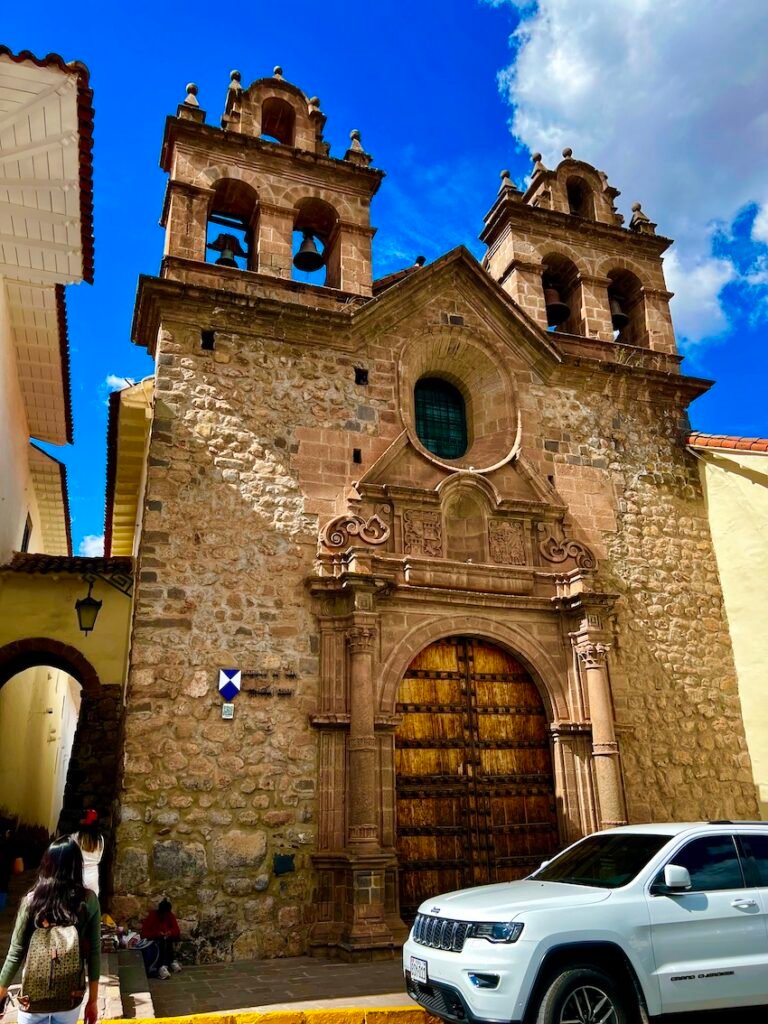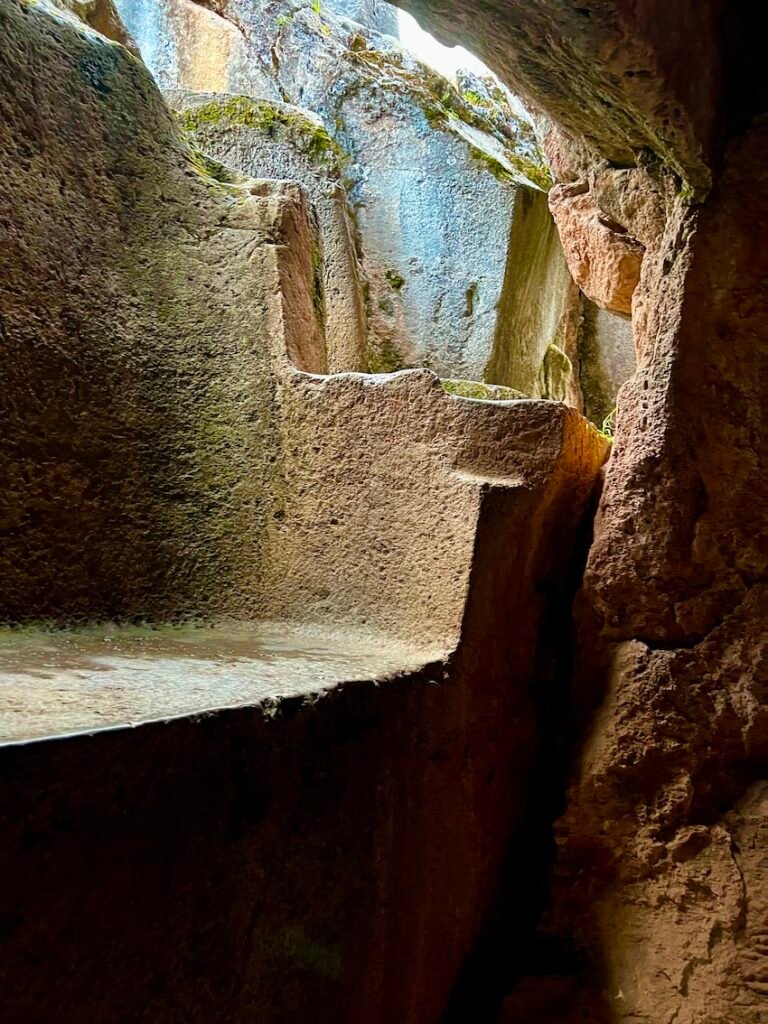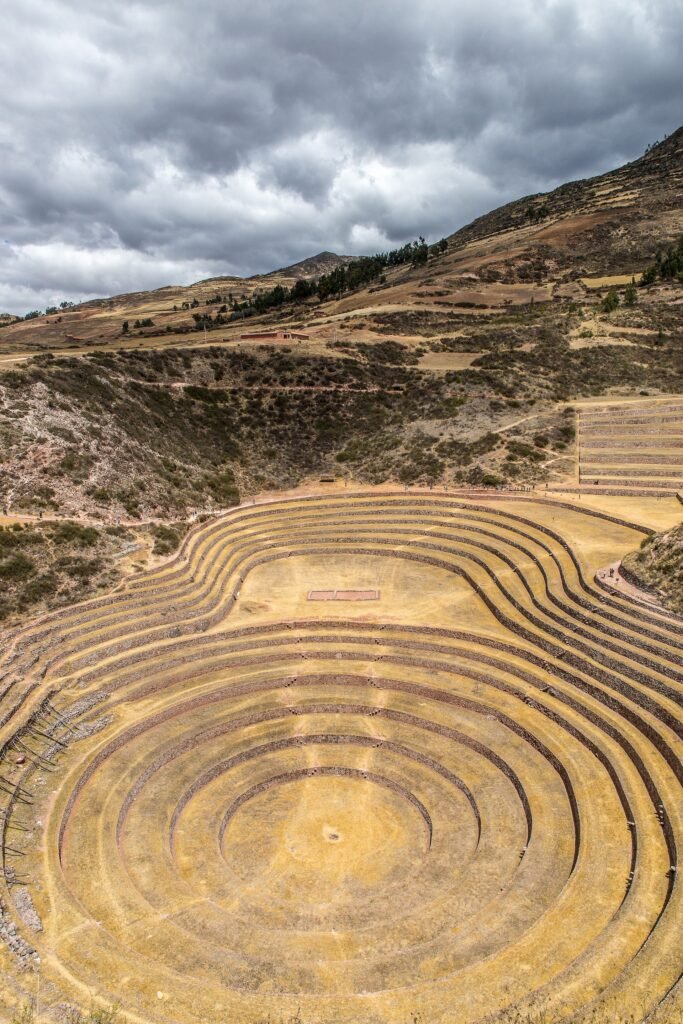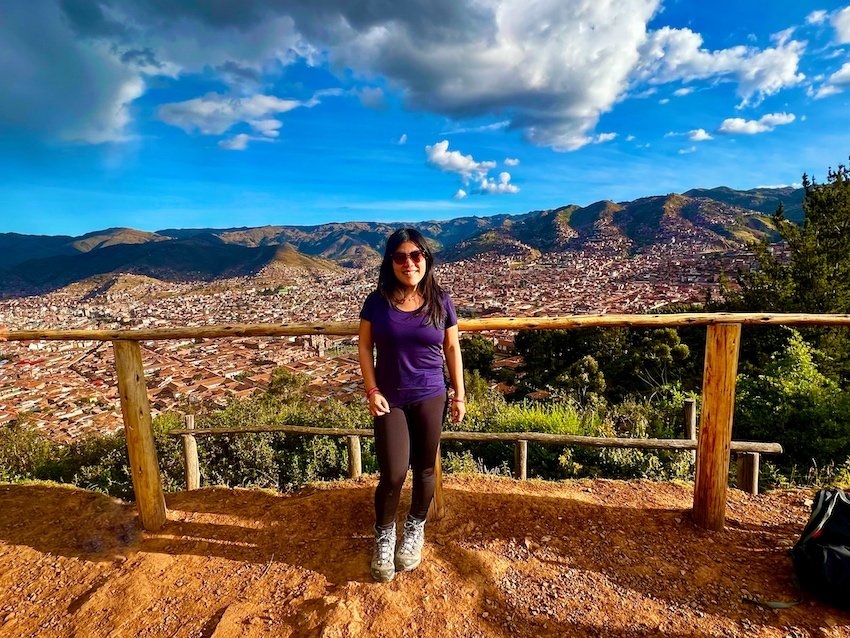Cusco is known on the tourist map for being the gateway for treks and visits to Machu Picchu, but it is an incredible destination in its own right. Cusco was the capital of the Incan Empire from the 13th century until the Incas were defeated by the Spanish conquest in the 16th century. A world UNESCO World Heritage site, Cusco welcomes nearly 2 million visitors a year.

A historical treasure in and of itself, Cusco holds historical sites spanning the Incan Empire through the Spanish Colonial era and is also a gateway for visits to other iconic sights and natural wonders in Peru such as Rainbow Mountain and the Sacred Valley. This post will highlight things to do in Cusco as well as amazing activities – aside from Machu Picchu – that can be done as day trips from Cusco.
Contents:
- Where to stay in Cusco
- Free Walking Tour in Cusco
- Visit the Mercado Central de San Pedro
- Visit the Incan Ruins at Saqsaywaman and Q’enco Archaelogical Complex
- Trek to Rainbow Mountain
- Take a Day Trip to the Sacred Valley
- Take a Day trip to Humantay Lake
- Visit Machu Picchu
- Final thoughts on Cusco, Peru
This post includes affiliate links. If you make a purchase via one of these links, I may receive a small percentage at no extra cost to you.
Where to stay in Cusco:
The Kokopelli Hostel is an excellent budget-friendly accommodations option centrally located in Cusco. The hostel has a lively bar, and is a great social hostel without going overboard with the crazy parties. I was able to get some rest here. One bonus is they will let you store you larger baggage here for free if you go on a large trek, and also have a security camera monitored lockers at the reception area where you can keep valuables like laptops and electronics without having to worry about leaving these items in the general storage area.

If you have more of a budget, consider the Hotel Antigua Casona in the popular San Blas neighborhood of Cusco. The very well-reviewed property oozes old-world charm and features a stunning courtyard where they have communal fires in the evenings.
Free Walking tour in Cusco:
Free walking tours are a great way to get to know a city and potentially meet new friends to travel with. There are many free walking tour options available in Cusco. I really enjoyed my free walking tour with Incan Milky Way tours – they have over 4000 positive reviews with a near 5 star rating at the time of writing, so many others agree with me. They run tours in Spanish and English every day at 10am and 1pm. Would recommend registering online in advance. Please make sure to tip your guide. If you also want to visit the Incan sites around Cusco, I would actually recommend doing this excursion which includes a guided Cusco city tour plus the nearby Incan sites – as I found it difficult to visit all the Incan sites on my own.




Visit the Mercado Central de San Pedro:
Designed in 1925 by Gustave Eiffel, the San Pedro market is the oldest in the city. This covered market is just a few minutes walk from the Plaza de Armas (main central square of Cusco), and has a huge variety of food, fruits, vegetables, clothing and souvenirs for sale.


Visit the Incan Ruins at Saqsaywaman and Q’enco Archaeological Complex:
Built by the Incan leader Pachacuti in the 15th century, Saqsaywaman is a citadel overlooking the northern outskirts of Cusco. The impressive complex is constructed by enormous stones – some weighing more than 120 tons – that were cut to fit together perfectly without the use of mortar. Even after centuries, these enormous rocks are fit so perfectly together, that you cannot slip a knife between them.

It is estimated that more than 20,000 workers moved the massive stones to build the complex from local rock quarries without the knowledge or use of the wheel. In 1983, Saqsaywaman was designated (together with the city of Cusco) as a UNESCO World Heritage site.


You can walk to Saqsaywaman from Cusco city centre (approximately 5-6KM), or alternatively take a taxi. Entry to the ruins requires either a 1 day combo-ticket that will also allow you to visit the Q’Enco Archeological Complex, Pucapucara and Tambomachay for 70 Sols, or a Boleto Turistico de Cusco (130 Sols) – a multi-location tourist ticket valid for 10 days that allows you entry into Saqsaywaman and over a dozen other tourist destinations in around the Cusco area. There are no stand-alone tickets just for Saqsaywaman.

Less than 1km (20 minute walk) away from Sacsaywaman, is the Q’enco Archeological Complex. A complex said to be the site of sacred rituals and sacrifice. You can visit both Sacsaywaman and the Q’enco complex on the same day, and on the same 70 Sol multi-location ticket.


I visited Sacsaywaman and the Q’enco Archological Complex after doing the free walking tour in the morning. However, if I were to do it again, I would probably do this well-reviewed excursion as it includes a city tour, as well as a guided visit to all 4 Incan sites of Sacsaywaman, Q’enco, Pucapucara and Tambomarchay. On my own, I was not able to get to Pucapucara and Tambomarchay by myself, and also I missed out on getting a guided commentary on the Incan sites. The paid excursion is excellent value and very inexpensive considering it includes a guide and transportation to all the sites.
Cristo Blanco:
Walking distance (10 minutes) from Sacsaywaman and Q’enco, is Cusco’s version of the white Christ the Redeemer statue. Definitely worth a visit if you’re already in the area.

Trek to Rainbow Mountain:
Discovered only in the mid-202s – due to ice melt – Rainbow Mountain also known as (Vinikunka or Montaña de Siete Colores) is undoubtedly one of Peru’s most iconic sites. The mountain can be easily visited from Cusco on a day trip that includes transportation, meals, and a guided trek to the top of the mountain. The path from village that now serves as a parking area, and “base-camp” to the summit of Rainbow Mountain is well-marked and non-technical. However, as the mountain peak is 5000m, the altitude will ensure this hike will be a challenge for most. Most hikers will reach the summit within 1- 2 hours – and guides are there to help support you along the way.



Take a tour of the Sacred Valley:
The Sacred Valley is an area encompassing the river valley of the Urubamba river starting from the town of Pisac, to the Incan Ruins of Machu Picchu. The valley was slowly incorporated into the Incan Empire between 1000 to 1400 AD. The area was of interest to the Incas as its lower elevation allowed maize – a prized crop in the Incan empire – to be grown in the valley.
An interesting and macabe sidenote: Maize was used to make a fermented drink called “Chicha” which the Incas would drink out of the decapitated skulls of their enemies. The Sacred Valley can be visited on a day trip from Cusco.



Day a day trip to Humantay Lake:
The stunning high-altitude Humantay lake sits at 4200meters above sea-level at the base of Humantay mountain. Nestled between snow-capped mountains of the Vilcabamba mountain range, this pristine turquise-blue lake will surely take your breath away. If you are trekking the Salkantay trek to Machu Picchu, your trek will pass by Humantay Lake. If you’re not trekking the Salkantay trek, you can visit Humantay Lake from Cusco on a day trip.

Visit Machu Picchu:
Cusco, is of course, the major hub for visits to the crown jewel of Peru: Machu Picchu. Believed to have been built at the height of the Inca Empire in the 15th century, the site was abruptly abandoned 100 years after its construction. Many experts believe that the site served as a royal estate for Inca emperors and nobility. Others have theorized however that it may have been a religious site rather than a royal residence.

Whatever its true intended purpose, the citadel is a sight to behold. Nestled between two mountain peaks – Huayna Picchu to one side, and Machu Picchu Mountain on the other, the site is truly a marvel of human civilization melding with the glory of nature.
Machu Picchu can be visited on a multiday trek from Cusco via the Inca Trail – the trail the Incas initially used to travel to Machu Picchu; or also via the Salkantay Trek. I hiked the Salkantay Trek to Machu Picchu and it was an amazing experience that I’ll cover in my next post.

One word of warning, if you’re planning to trek Machu Picchu, please plan to have at last 2-3 days of acclimatization either in Cusco or other higher altitude locations prior to commencing any trek. The last thing you want is to have elevation sickness while trekking to Machu Picchu – this is particularly the case if you want to attempt the Salkantay trek.
If you have quite a bit of time in Peru – consider having Machu Picchu at the end of your itinerary to slowly build up your tolerance to the elevation. I found that having Machu Picchu near the end of my 3 week trip in Peru helped me immensely in being optimally acclimized for the elevation gains I encountered on the Salkantay trek.

Final Thoughts on Cusco, Peru:
For most travellers, Cusco only comes to mind as being the city the fly into in order to visit Machu Picchu – I thought the same way – until I arrived in Cusco and saw everything it had to offer. From the Incan Ruins at Saqsaywaman and Q’enco, to being a base-camp to visiting the nearby Sacred Valley and stunning Rainbow Mountain, make sure you leave yourself at least a few days in Cusco to experience everything this area has to offer aside from being a gateway for your visit to Machu Picchu.

